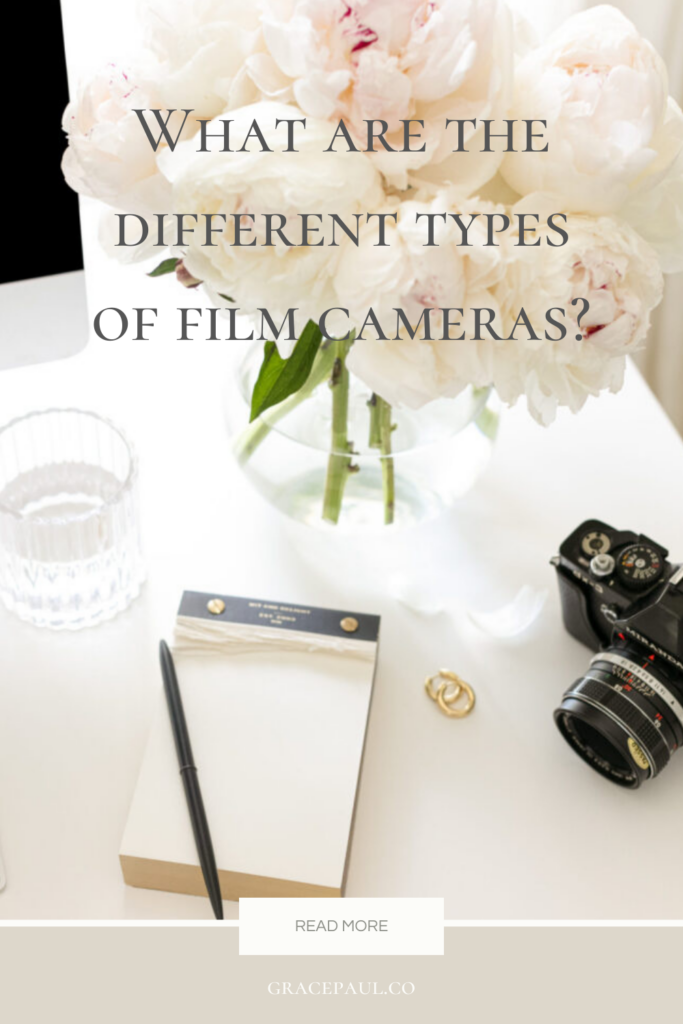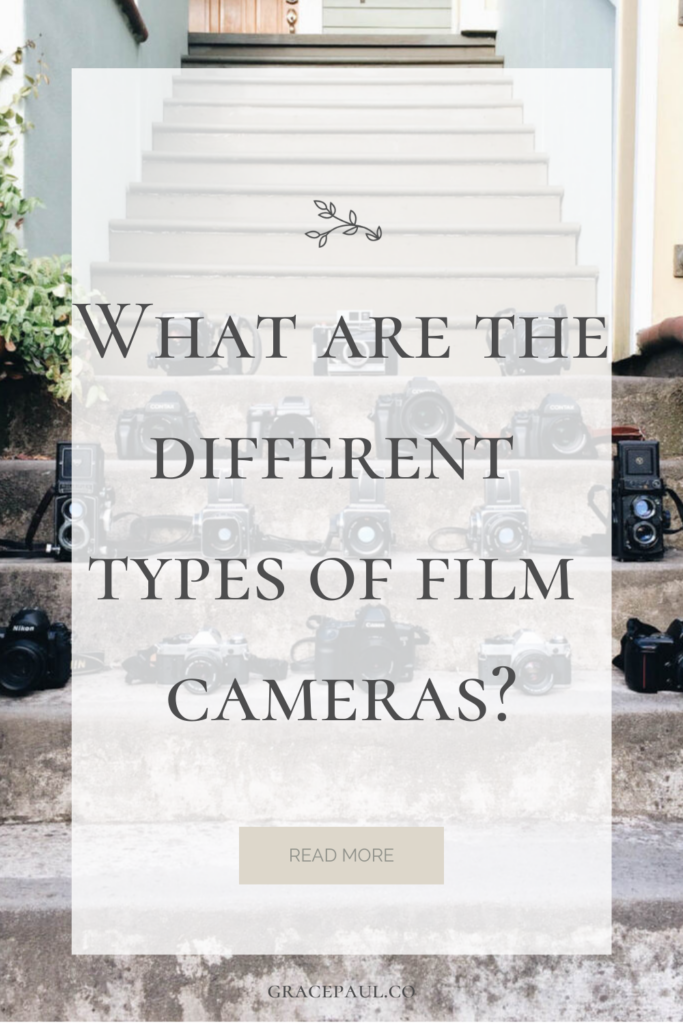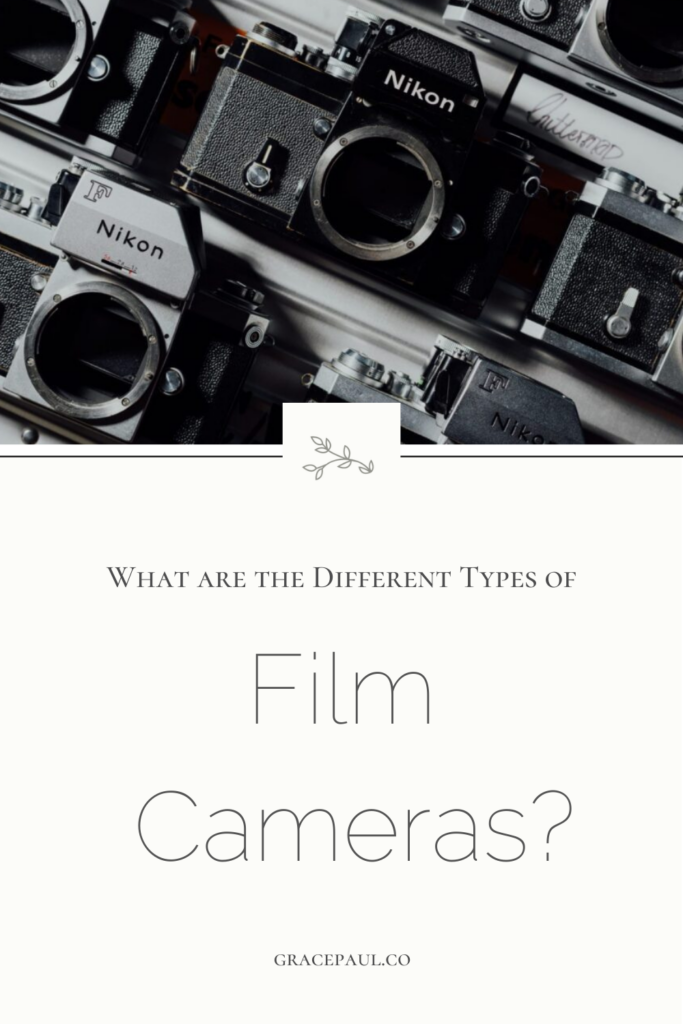What are the Different Types of Film Cameras?
There are a lot of moving parts when it comes to film photography. Things like camera type, film stock, metering, and lighting are all significant factors in how your film images turn out. I want to take the guesswork out and help you fix the frustrating parts of learning something new by breaking it down, one piece at a time. Starting with a crucial first step- understanding the different types of film cameras.
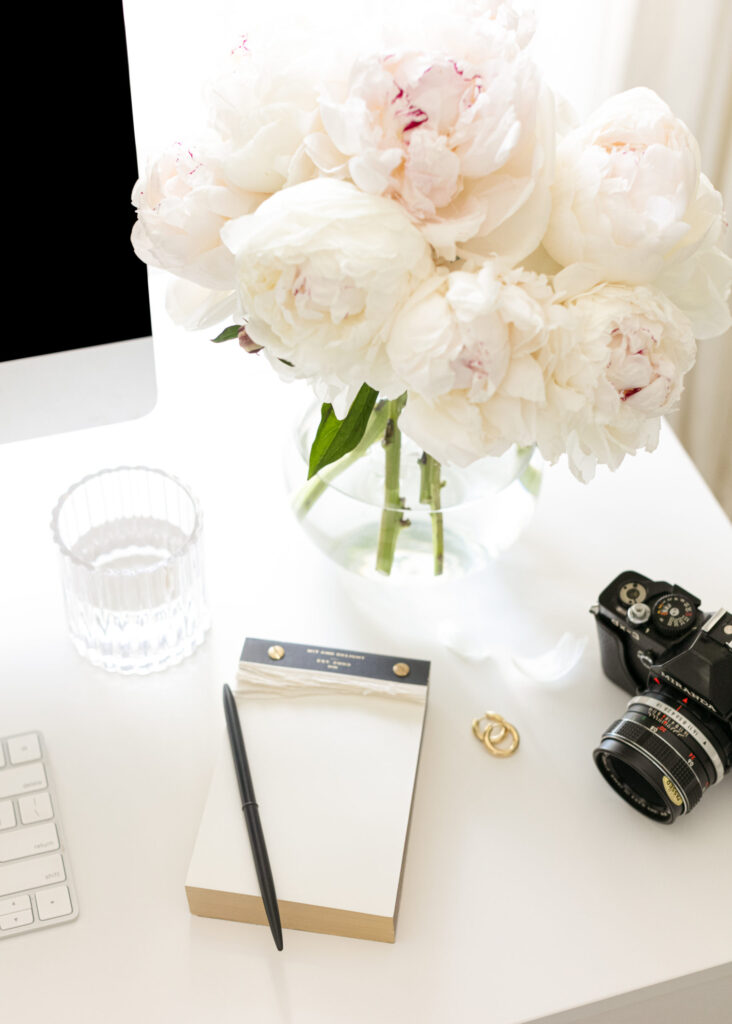
Choosing the right film camera
You can find film cameras anywhere from your Grandfather’s attic, to the thrift store, to the highest-end photography shops. But before delving into what camera to use, you must see what type of film it shoots.
Unlike digital photography, where you can pop an SD card into any brand camera and achieve similar results, film cameras take only one type of film per camera.
For example, you can’t put 35mm film in a medium format camera and vice versa. So do a little research before you begin.
Let’s break down the three main types of film cameras.
Point and Shoot Film Cameras
Point-and-shoot film cameras are compact, making them great for travel or everyday life. But they also have some limitations you should know about before purchasing.
Most point-and-shoot film cameras will have a fixed aperture and only automatic controls, including flash.
While some professional models may come with upgraded features, I still don’t recommend starting with a point-and-shoot because there is little to learn from it.
The camera is doing most of the work. However, once you’re confident in the basics of film, a point-and-shoot is a good option for an easy and portable film camera.
SLR Film Cameras
SLR film cameras are the most common 35mm cameras floating around. They include models like Canon AE-1, Nikon F100, Pentax K1000, and Canon EOS.
SLR stands for single-lens reflex, which means it uses a mirror system to take a photograph. It’s the most similar in shooting style to a traditional digital camera. Hence the name- add a “D,” and you have DSLR.
SLR film cameras have complete manual control and inter-changable lenses and are excellent for starting out with film photography.
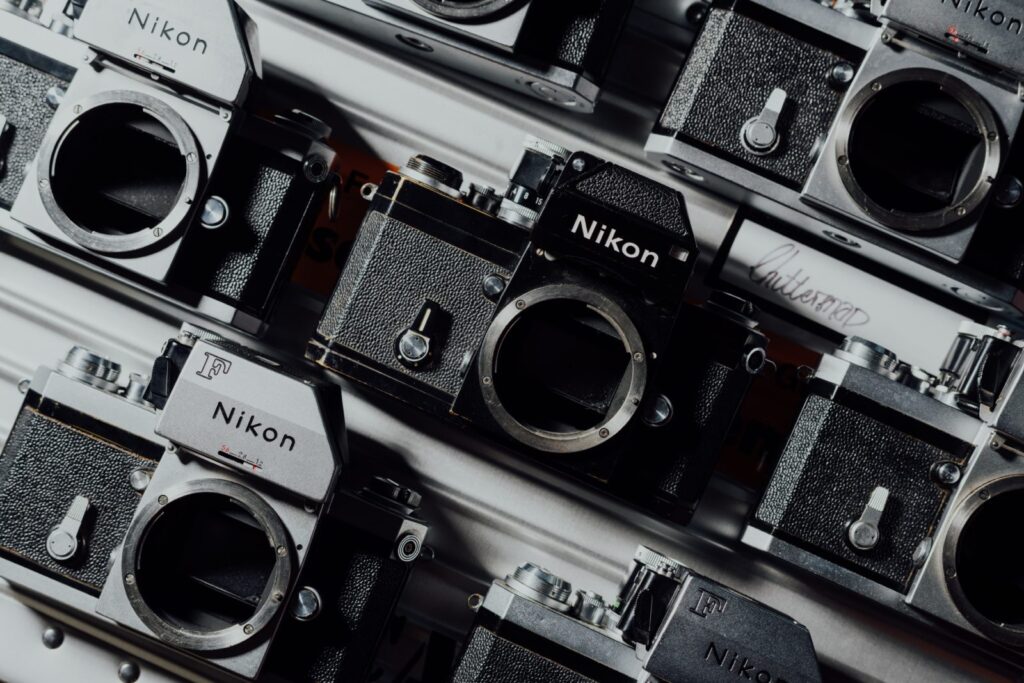
Medium Format Film Cameras
Medium format film cameras are also commonly referred to as 120 mm film cameras. This means that they only use 120 mm film. Some of the most common models are the Contax 645 and the Pentax 645 (and Pentax 645n).
Medium format cameras produce beautifully high-quality images with a finer grain than 35 mm film. The high resolution allows for images to be printed larger, and the shallower depth of field makes for the creaminess associated with film photography.
The color accuracy and image quality are better, but these cameras are heavier, bulkier, and more expensive than 35 mm cameras. Additionally, the 120 mm film used in medium format cameras only has 16 frames per roll. You may choose to start with a 35 mm, or SLR film camera, while you’re learning, and then upgrade to a medium format camera once you’re more comfortable and confident.
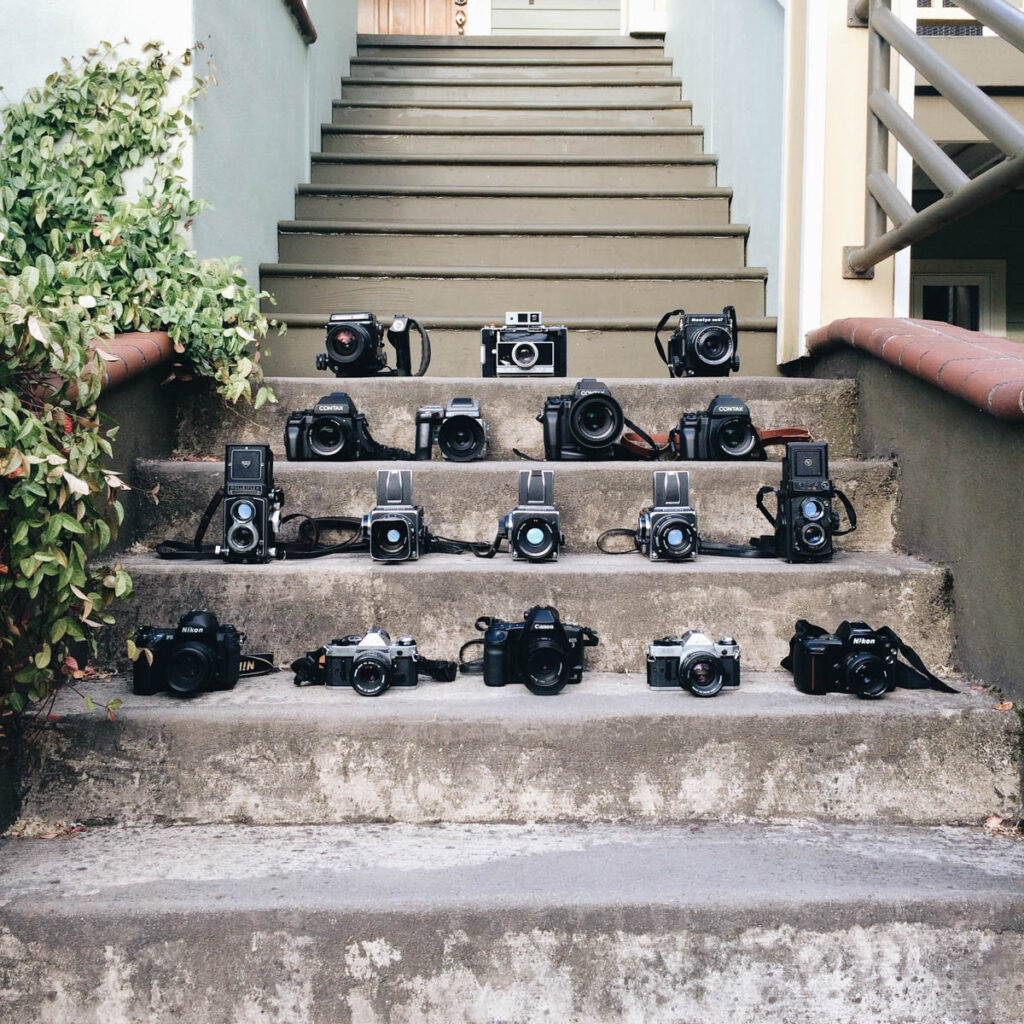
Now that you’re in control of what film camera to start with, let’s talk about an external light meter. Internal meters on older film cameras aren’t as reliable as modern-day DSLR and mirrorless cameras. So for correct and consistent exposures, you’ll want one of these simple tools. And be sure to check out this post, where I walk you through exactly how to meter your film.
Grace Paul is a mama, film photographer, and educator in Nashville, Tennessee. She finds joy in teaching others how to find joy in their business and art. Learn more about her educational offerings here.
